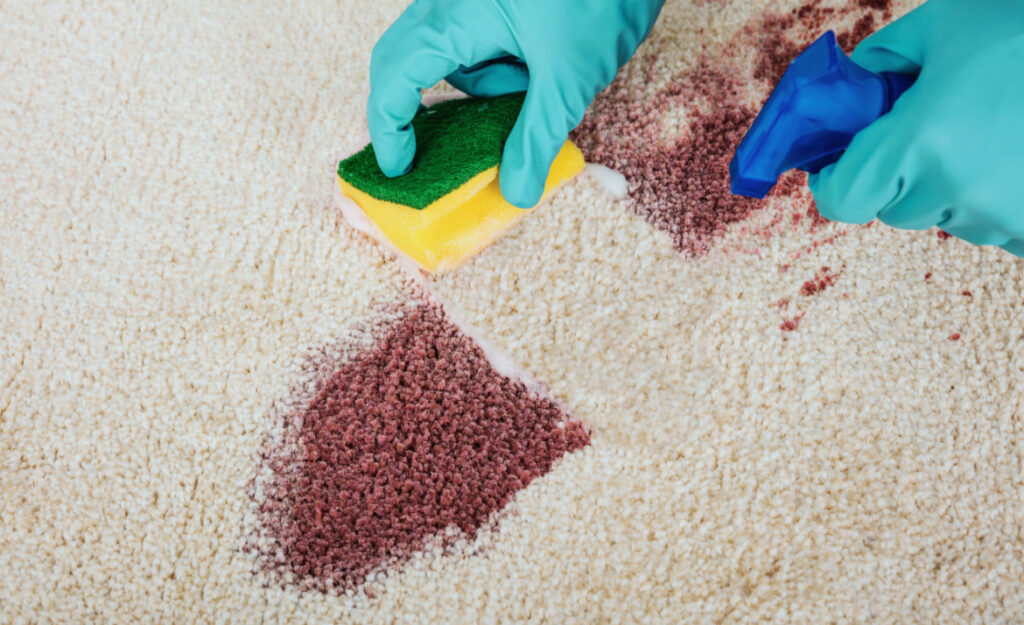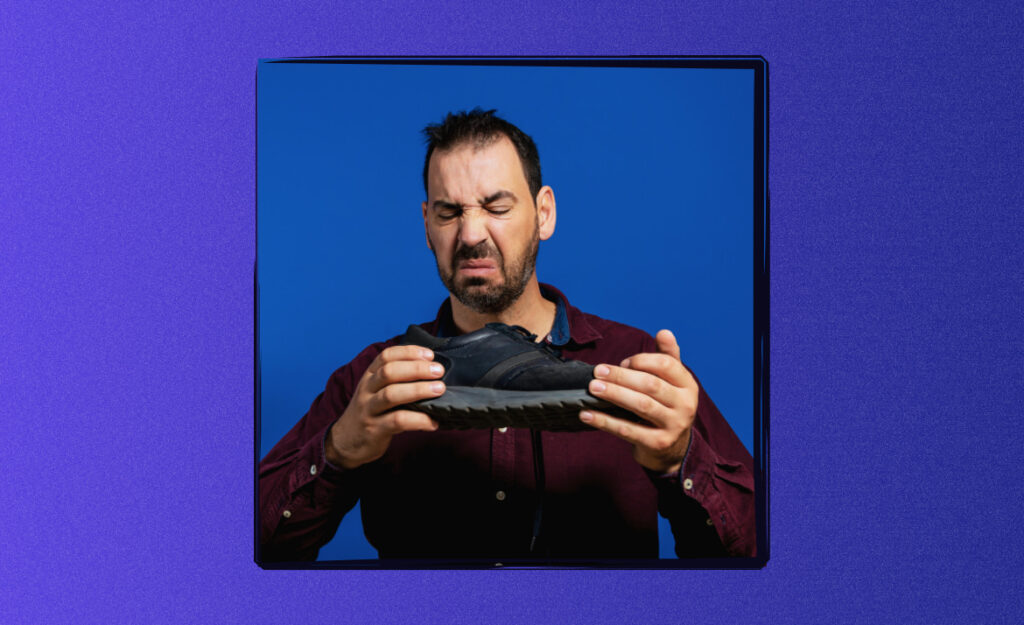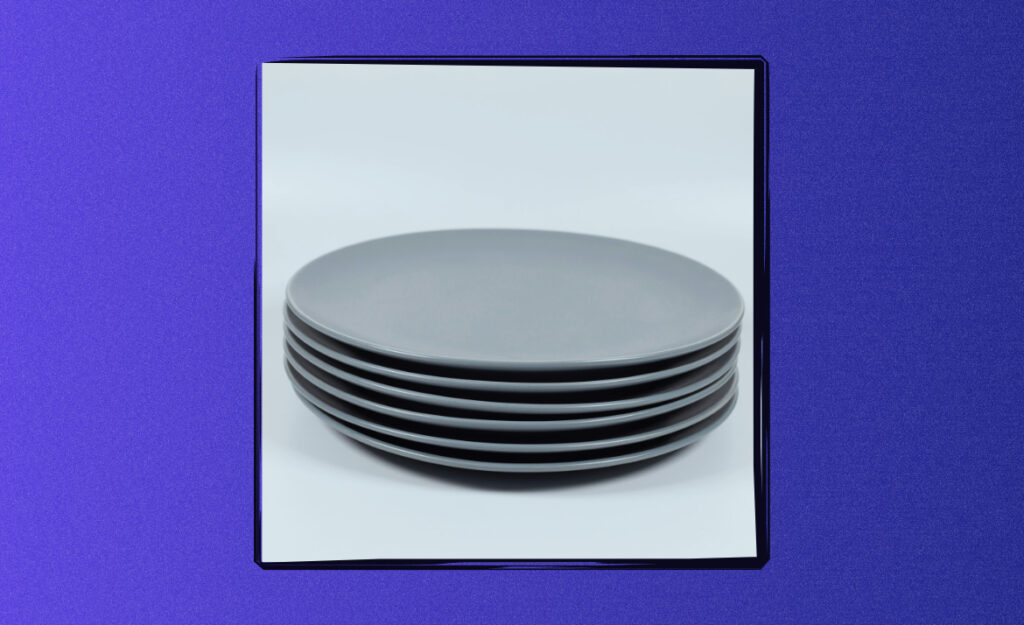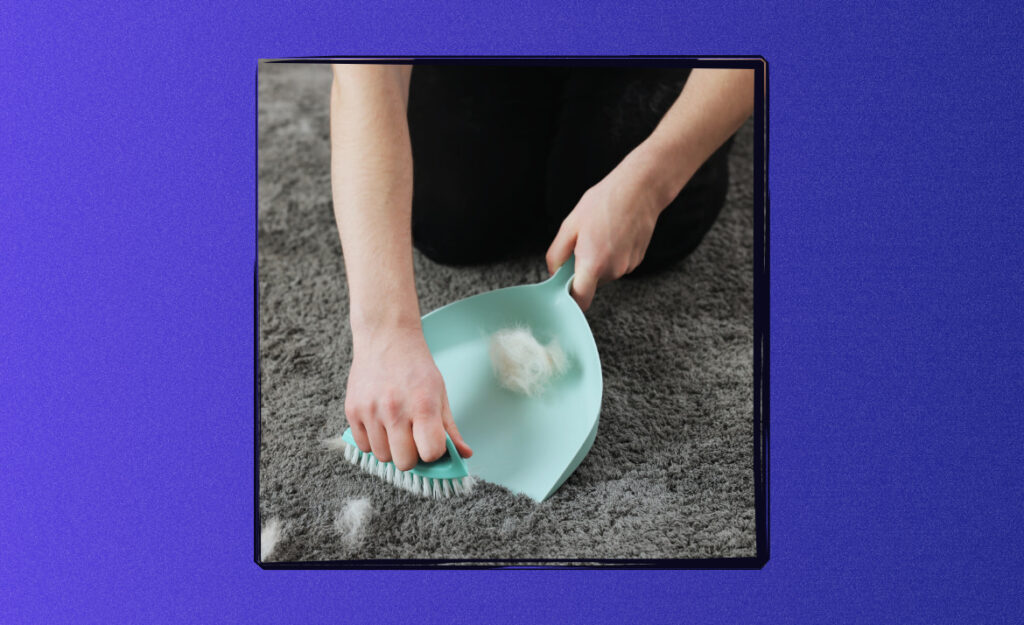
Accidents happen, and when a drink spills on your living room rug, the urge to remove carpet stains quickly becomes urgent. Instead of reaching for harsh products, imagine grabbing pantry staples and getting results in minutes.
Carpets absorb spills and dirt over time, leaving visible marks that undermine a clean space. Tackling these spots immediately keeps carpets looking fresh, reduces long-term damage, and avoids using chemicals around your home or family.
Explore practical, chemical-free methods you can start using today. Discover gentle yet effective ways to lift stains, handle unexpected messes, and enjoy cleaner, healthier carpets with everyday items already in your kitchen or laundry room.

Vinegar Cleaning Hacks That Actually Work
Get step-by-step routines, realistic household tips, and eco-friendly results for every corner of your home.Immediate Action Lifts Stains Effectively Every Time
Fast response stops stains from setting deeper into carpet fibers. Blotting and natural treatments work best before marks become permanent, giving your cleaning efforts a real advantage.
Following tried-and-true steps lets you tackle spills with confidence and reduces anxiety about lasting damage or unwanted smells. Acting promptly keeps hassle low and carpets looking fresh longer.
Blot, Don’t Rub: The Right First Step
Grab a clean, dry towel and press gently onto the stain. Avoid rubbing—back-and-forth action pushes stains deeper and spreads the mess, especially on plush or high-pile carpets.
Blotting draws liquid up from fibers. For extra absorption, fold the towel and press with your palm. If color transfers to your cloth, you’re pulling stain away rather than grinding it in.
Repeat blotting with a fresh towel section each time. Once moisture is removed, you’ll see the stain begin to fade and be set for further cleaning.
Use Plain Cold Water First
Pouring a small amount of cold water directly onto the remaining stain can help dilute many beverages, fresh food spills, or pet accidents. Avoid warm water—it sets proteins and sugars.
Continue to blot with your towel until there’s barely any residue. Cold water flushes out particles before residue bonds to fiber, priming the spot for any natural cleaning solution you’ll apply next.
If using water alone clears most of the mark, you’ll prevent the need for stronger agents and keep your process as gentle as possible on your carpet.
| Stain Type | First Step | Natural Treatment | Next Action |
|---|---|---|---|
| Red wine | Blot, then cold water | Salt or baking soda | Vacuum residue after dry |
| Coffee | Blot, cold water | Vinegar-water spray | Repeat blotting |
| Pet accidents | Blot, cold water | Baking soda, then vinegar | Rinse and dry |
| Mud | Let dry, vacuum | Baking soda paste | Blot and rinse |
| Grease | Blot, powder (cornstarch) | Vacuum, then vinegar | Rinse and dry |
Baking Soda Works Wonders on Most Spots
Baking soda acts fast on liquids, odors, and greasy streaks, helping you remove carpet stains. Using it as your go-to method clears surface stains, breaks up residue, and refreshes carpets—no commercial products needed.
Apply directly to wet or dry stains, and let it sit for proper absorption. Timing and technique matter for getting results that match store-bought products, without introducing chemicals.
Sprinkle and Wait for Deep Absorption
Baking soda needs contact time. Always sprinkle a generous amount, fully covering the spot. Walk away for 10–20 minutes for mild stains and at least an hour for tougher problems or odor control.
- Sprinkle over damp stains to absorb liquids, making the mess easier to remove once dry.
- Let sit for proper absorption, ensuring the powder draws up odors and any oily material for one-step cleanup.
- Vacuum completely, moving in several passes, to lift all used baking soda along with the trapped debris.
- Repeat as needed for lingering odors or if an especially vivid stain remains after the first round.
- If baking soda clumps, scrape gently with a spoon before vacuuming.
Baking soda works equally well on old, sticky residues if you mist lightly with water first so the powder can start breaking it down.
Mix with Vinegar for Tougher Jobs
For set-in or protein-based stains, a baking soda-vinegar combo speeds up the reaction and lifts stubborn messes. It’s especially effective for remove carpet stains from wine, juice, or pet accidents.
- Spread a layer of baking soda over the mark, ensuring coverage of edge areas where liquid might have seeped.
- Spray undiluted white vinegar directly atop the baking soda, causing a fizz. Wait until bubbling stops for full cleaning action.
- Blot gently but thoroughly, absorbing any moisture and residue left from the fizzing reaction between powder and vinegar.
- Rinse with a damp towel, and repeat if needed for particularly heavy discoloration or persistent odors in thick pile carpets.
- Let dry fully before walking on the area, then vacuum away any remaining dry residue.
This mixture neutralizes odors, brightens carpet, and removes visible marks without lasting scent or sticky residue.
Club Soda Lifts Fresh Spills Instantly Each Time
When liquid hits your carpet, grab club soda. Its carbonation brings spills to the surface and breaks up many stains—especially useful for recent coffee, juice, or wine accidents.
Pour directly onto the spot, watch bubbles lift debris, and blot dry. Club soda’s minerals don’t harm carpet fibers and leave no residue once you’ve dried the area properly.
For Wine or Soda: Pour and Blot Fast
Pretend you’ve just spilled punch at a party. Immediately pour club soda directly onto the stained spot so bubbles can loosen sticky sugars and dyes from carpet threads.
Grab a clean towel, press down, and pause to give the carpet time to release the stain. Shift to a dry section of your towel for each blot until the color stops transferring.
Repeat pouring and blotting once or twice for brighter results without introducing strong-smelling or abrasive solutions to your carpet surface.
For Coffee or Tea: Carbonation Breaks Down Pigments
Right after a spill, pouring club soda helps lift deep brown stains that bond to fiber. It’s especially effective for beverages with both color and a small oil content, like coffee with cream.
Always finish by patting the area with a dry towel, minimizing any musty smells or water rings left behind. This method avoids watermarks for common breakfast drinks and other spills.
For large spots, pour slowly around the edge first, then work toward the center—this keeps affected area from spreading outward and makes your job faster and easier.
Sunlight and Fresh Air Neutralize Lingering Odors and Stains
Exposure to sunlight and open windows enables your carpet to breathe, fading stubborn stains naturally and removing trapped smells. Especially after using vinegar or baking soda, setting damp rugs in the sun finishes the job.
Fresh air acts like a reset button. Air out rugs after cleaning to speed drying, discourage mildew growth, and refresh the space without artificial scents.
Sun Solutions: Place Rugs Outdoors
If possible, lift smaller rugs or removable carpet sections outside on sunny days. Place them over railings or chairs so direct sunlight reaches most of the fibers where stains reside.
Sunbleaching brightens color while breaking down remaining organic material. Letting your rug sit for a few hours improves not only look but also removes stubborn odors left from previous stains.
This approach works especially well for pet accident areas or after using homemade cleaning solutions, as natural UV rays neutralize lingering smells.
Ventilation: Dry Carpets and Prevent Mold
Once you’ve cleaned a spill, open windows and doors for fast air exchange. Moving air cuts drying time by more than half and ensures no moisture remains trapped in carpet padding or backing.
Position a fan close to the cleaned spot if open air is limited. Intensive airflow prevents mold and discoloration, keeps fibers fluffy, and provides a fresh, neutral scent in the room.
This extra step is key in humid climates or for deep pile rugs that retain moisture longer, maintaining carpet integrity after cleaning.
Salt, Cornstarch, and Ice Cubes Remove Specific Stains Swiftly
Using salt for liquid spills and cornstarch for greasy spots offers quick, targeted strategies. Ice cubes solidify gum or wax messes, making removal easy and preventing deeper fiber stains.
Always keep these pantry staples nearby—their versatility exceeds expectations, handling marks traditional sprays can’t, and everything washes away cleanly with water or vacuuming afterward.
Salt and Cornstarch: Two Sides of Cleaning
Cover wet spills instantly with table salt. It pulls up moisture and helps dye particles gather for easy lifting. After drying, brush salt away before vacuuming.
On oily marks, sprinkle cornstarch and let it sit for 15 minutes. It absorbs grease and loosens residue for safe vacuuming, leaving less behind than soaps or foams.
If the area looks hazy after powdering, mix a bit of baking soda for double power and easier final cleanup.
Ice Cubes: Frozen Fix for Sticky Messes
Press an ice cube against gum, wax, or sticky candy embedded in carpet fibers until frozen solid—about 1–2 minutes. Hardened residue cracks or peels up when lifted gently with a butter knife.
Work gently to avoid tugging at carpet threads. For remaining specks, dab with vinegar or mild soap and blot dry quickly, ensuring no leftover stickiness or water damage.
This simple trick turns a potentially difficult, sticky stain into a minor annoyance handled in seconds without chemicals or harsh cleaners.
Good Habits Prevent Most Future Carpet Stains
Consistent small steps—like removing shoes, acting on spills immediately, and deep cleaning regularly—reduce buildup and prevent repeated stains. Building these habits protects your investment and simplifies every cleaning job along the way.
Prevention keeps carpets looking as new as possible, creating a welcoming space that makes accidents less stressful and cleanup more manageable day to day.
- Take shoes off at the door: Stops grinding in dirt, salt, and outdoor debris that cause dullness and paint-like stains over time.
- Spot-clean spills immediately: Even water-based marks set if neglected—treat them as soon as you see or feel a wet spot on carpet.
- Vacuum regularly: Picking up dust and crumbs weekly stops stains from forming hidden foundations below the surface, especially in high-traffic zones.
- Use mats in entryways: A doormat or rug absorbs the initial impact, containing messes before they reach your main carpeting.
- Set up pet feeding zones: Use washable pads under food dishes so small accidents or splashes don’t collect in fibers and require deeper cleaning later.
Don’t wait for visible marks. Keep preventive routines in mind, making the need to remove carpet stains a rare, rather than recurring, concern.
Conclusion: Embrace Chemical-Free Solutions for a Cleaner Home
Simple, natural methods keep your carpet stain-free, healthy, and welcoming. Relying on household staples takes the worry out of messes and supports a safer environment for family and pets.
Each tool and tactic—from baking soda to sunshine—targets specific stain types without adding harmful residues. These practical, proven steps ensure that you can remove carpet stains confidently, no matter what life brings.
Adopt a habit of gentle cleaning and prompt action. Your floors will thank you with vibrant colors and comfort underfoot, free from both chemicals and visible marks. Tidy, cozy spaces begin with the right approach every time.
Frequently Asked Questions
What natural solutions remove carpet stains most effectively?
Baking soda, white vinegar, and club soda top the list for most stains. Each treats a different type: baking soda absorbs moisture and odors, vinegar breaks down organic matter, and club soda lifts recent spills. Used together or separately, they handle most household incidents.
Can I use these methods on all carpet types?
Yes, these chemical-free techniques are safe on most synthetics and naturals. Always test a small hidden area first, especially on wool or delicate patterns, to avoid discoloration or texture change. Wait until an area dries to confirm no side effects before treating a visible spot.
Will removing stains with these methods cause fading?
Correct use of natural solutions won’t fade color. Avoid scrubbing, use gentle blotting instead, and rinse out residues thoroughly. Baking soda and vinegar are both color-safe when following dosing instructions, and proper ventilation after cleaning helps maintain vibrancy.
How do I prevent odors after cleaning a carpet stain?
Blot liquids completely before drying. Using baking soda neutralizes underlying smells. Allow extra drying time or expose the spot to sunlight and fresh air for complete odor removal. Avoid masking odors—remove them by thorough drying and cleaning instead.
What if a chemical cleaner was used before trying natural methods?
Rinse the area with cold water first and blot dry. Baking soda can lift residual chemical residues and remaining stain particles. Switch to natural solutions for future spills to protect carpet fibers and indoor air quality going forward.



